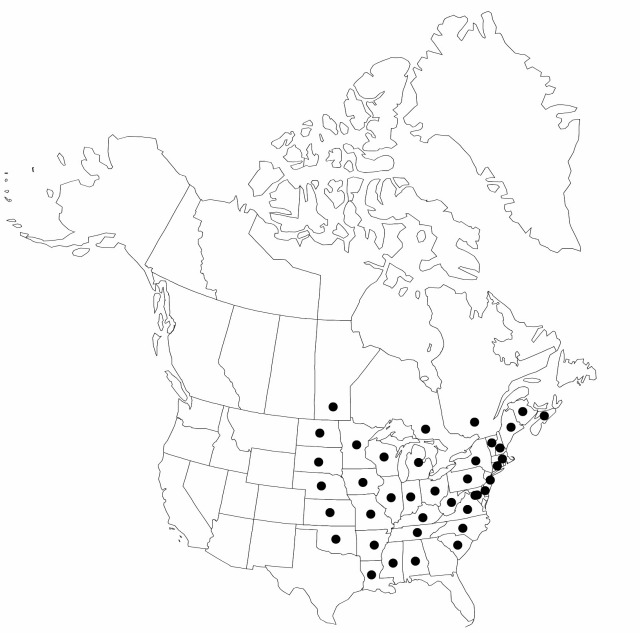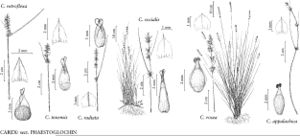Difference between revisions of "Carex radiata"
Fl. S.E. U.S., 218. 1903.
FNA>Volume Importer |
FNA>Volume Importer |
(No difference)
| |
Revision as of 19:08, 24 September 2019
Plants without conspicuous rhizomes. Culms 20–80 cm, 0.8–1.5 mm wide basally, 0.4–0.5 mm wide distally. Leaves: sheaths tight, green, fronts hyaline; ligules less than 2, wider than long; widest leaf blades 1.3–1.9 mm wide. Inflorescences with 4–8 spikes, 3–7 cm × 5–7.5 mm; proximal internodes more than 2 times as long as proximal spikes; proximal bracts to 5(–10) cm; spikes with 3–8 spreading or reflexed perigynia. Pistillate scales hyaline with green midvein, ovate, 1.4–2.3 × 0.9–1.6 mm, body 1/2 length of perigynium, apex obtuse, acute, or awned. Anthers 0.8–1.3 mm. Perigynia green, faces not veined, 2.6–3.8 × 1–1.5 mm, base of body spongy, thickened, longitudinally striate adaxially, spongy region 1–1.5 mm, margins serrulate distally; beak 0.4–1 mm, apical teeth 0.1–0.2 mm. Stigmas straight or slightly twisted, 0.03–0.06 mm wide. Achenes ovate to obovate, 1.5–2 × 1–1.4 mm. 2n = 58.
Phenology: Fruiting mid–late spring.
Habitat: Mesic to wet-mesic deciduous and mixed forests, often seasonally wet areas
Elevation: 50–1000 m
Distribution

Man., N.B., N.S., Ont., Que., Ala., Ark., Conn., Del., D.C., Ill., Ind., Iowa, Kans., Ky., La., Maine, Md., Mass., Mich., Minn., Miss., Mo., Nebr., N.H., N.J., N.Y., N.C., N.Dak., Ohio, Okla., Pa., S.C., S.Dak., Tenn., Vt., Va., W.Va., Wis.
Discussion
The name Carex rosea has frequently been misapplied to C. radiata.
Selected References
None.
